Are you cooking an Asian-inspired meal and need a substitute for Hoisin Sauce? This beloved condiment may seem challenging to find a swap for because of its complex flavor.
We’ve compiled a list of the best substitutes for hoisin sauce that will ensure your dishes are just as flavorful and satisfying.

Hoisin sauce taste is sweet and salty with umami flavor notes; it’s often compared to American barbecue sauces.
Thi sauce is a staple in many Asian kitchens.
There are many uses for this sauce when creating Asian dishes, including a marinade, flavoring agent for noodles, rice dishes, stir fry, and even a dipping sauce.
The name hoisin is an American spelling of the Chinese sauce’s name hai xian, meaning seafood. It is thought that original versions of this sauce contained seafood, making it a luxury. Now, there is no seafood to be found in the sauce.
The ingredients of hoisin sauce typically vary by brand, though the main ingredients usually include fermented soybean paste, brown sugar, garlic, sesame oil, and chiles.
This delicious sauce has multiple varieties that you can purchase at the grocery store, like tamari hoisin sauce and plum hoisin sauce.
Though you can expect a slight difference depending on the ingredient inclusions, these types provide a similar flavor as the traditional version.
Making homemade sauce is the best hoisin sauce alternative as it provides a nearly identical flavor and consistency to store-bought hoisin sauce. There are many ways to recreate a hoisin sauce recipe.
For the best authentic hoisin sauce, use the following ingredients to create a perfect base: soy sauce, creamy peanut butter, garlic, honey, rice wine vinegar, sesame oil, and Chinese five-spice powder.
No cooking is required, you’ll only need to mix the ingredients in a bowl, and you’re ready to go.
This recipe will require you to purchase additional ingredients. Some of these might not be easy to find.
Tip:
You can use homemade hoisin sauce for any recipe that calls for the store-bought option. Creating a homemade version allows you to adjust the flavoring to your preference. Use a 1:1 ratio to replace this homemade version with any store-bought options.
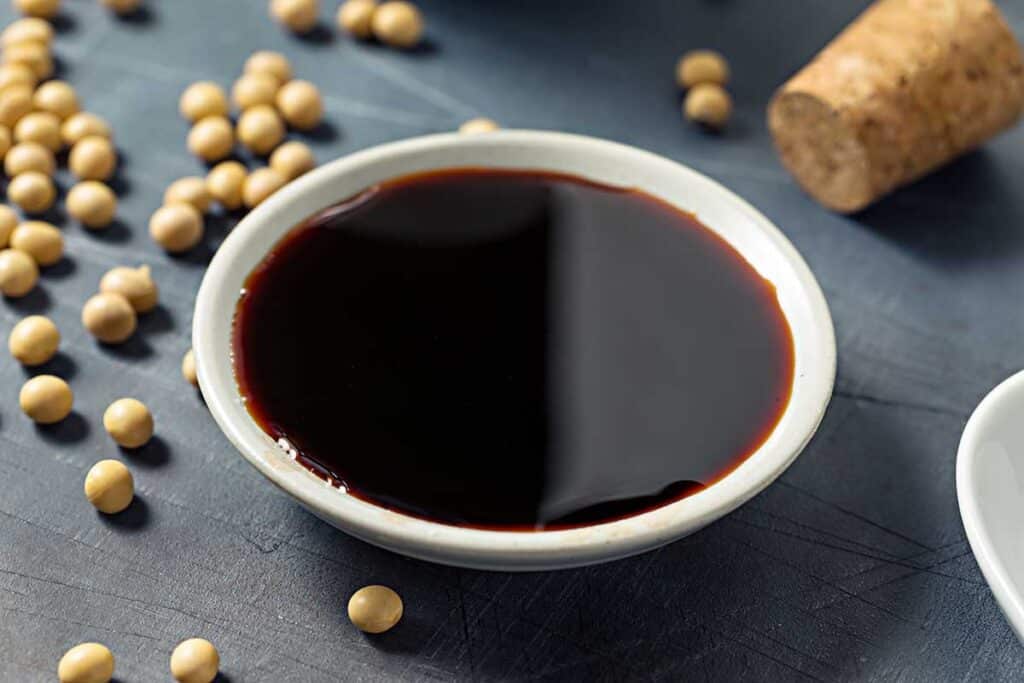
Soy sauce is also a great alternative to hoisin sauce. While it lacks the thick consistency and sweet notes, it provides a delicious umami flavor.
This condiment is easy to find in grocery stores and relatively cheap.
Add a dash of hot sauce to the mixture to mimic the chilis in the store-bought version.
Tip:
It’s best to add ½ teaspoon of sugar or sweetener to mimic the flavor better. This swap adds an extra step to your recipes. Use a 1:1 ratio to replace with soy sauce.

Teriyaki sauce is an excellent substitution for hoisin sauce.
It provides a sweet and salty taste with umami undertones. Though, you can expect a sweeter taste than hoisin.
This sauce is about the same thickness, so you can expect a similar consistency in recipes.
You can use this sauce as a replacement in any recipe. It works well as a marinade and flavoring agent in dishes.
Opt for the thicker teriyaki sauce for the best result, as the consistency of the marinade will be too liquidy.
This option is another condiment you’ll want to alter to mimic hoisin’s flavor better.
Tip:
Use a few dashes of hot sauce to offset the sweetness that this sauce provides. Use a 1:1 ratio.
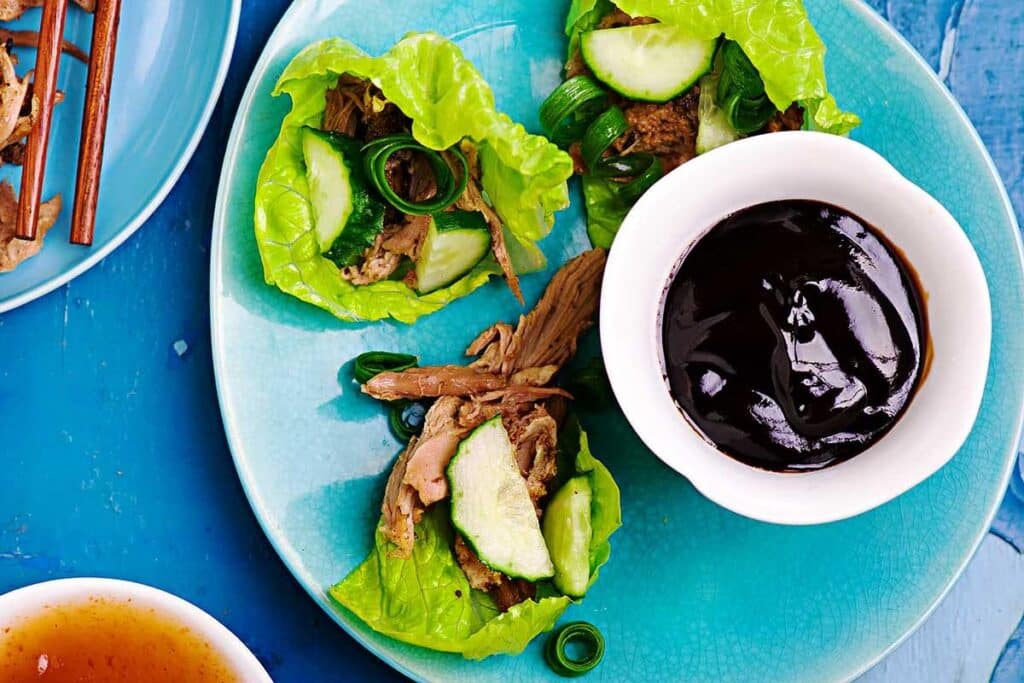
Regular barbecue sauce is an excellent replacement for hoisin sauce as you likely have it on hand already and can use an option that works best for your tastebuds.
This condiment provides a similar consistency, making it easy to swap one for the other.
Barbecue sauce is an excellent marinade for meat and will help create a flavorful dish.
While these sauces provide sweetness, barbecue sauce is often smoky and lacks the delicious umami flavor that hoisin offers.
Tip:
The flavor profile is much different between American barbecue sauce and hoisin sauce. Use a 1:1 ratio when using barbecue sauce as a replacement.
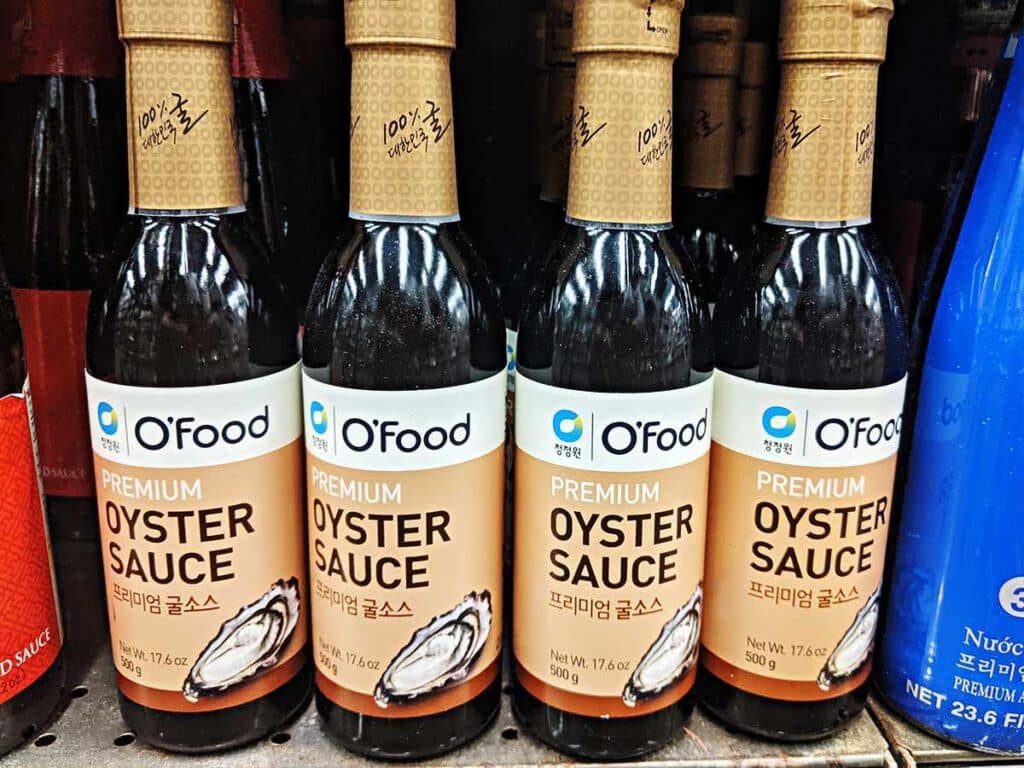
Oyster sauce is another popular condiment in Asian-inspired recipes.
It will bode well for most dishes that call for hoisin sauce.
Depending on the brand, this sauce is made from oysters or oyster juice, providing a fishy taste when you use it.
It also is less sweet than hoisin, so it’s not a perfect flavor match.
This sauce is also easily found in grocery stores.
Tip:
Use a 1:1 ratio. This option is not a perfect swap for all hoisin sauce recipes, though it will work well in stir-fries, seafood dishes, noodle dishes, and flavor vegetables.
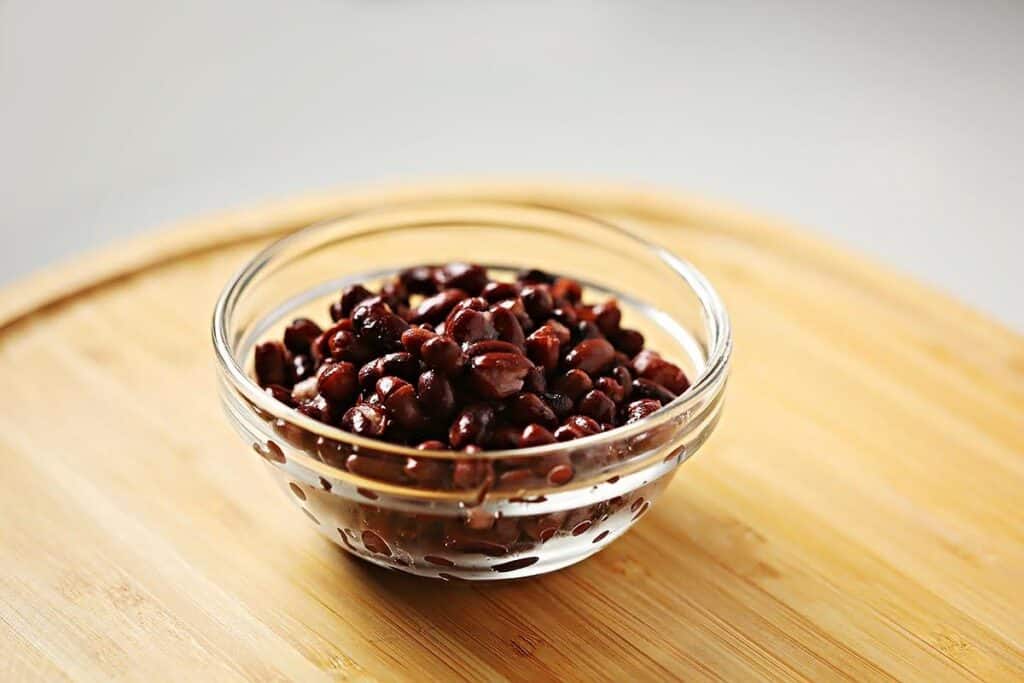
Black bean sauce is similar to an ingredient found in hoisin sauce – black bean paste. Both offer a similar umami flavor.
This sauce is also sweet and salty, like hoisin. It has a more robust flavor, so you’ll want to use a smaller amount as a replacement.
This sauce may be challenging to find for some unless you live near an Asian market or have a large Asian food section at your local grocery store.
Tip:
Start with ½ the required amount and adjust as needed.
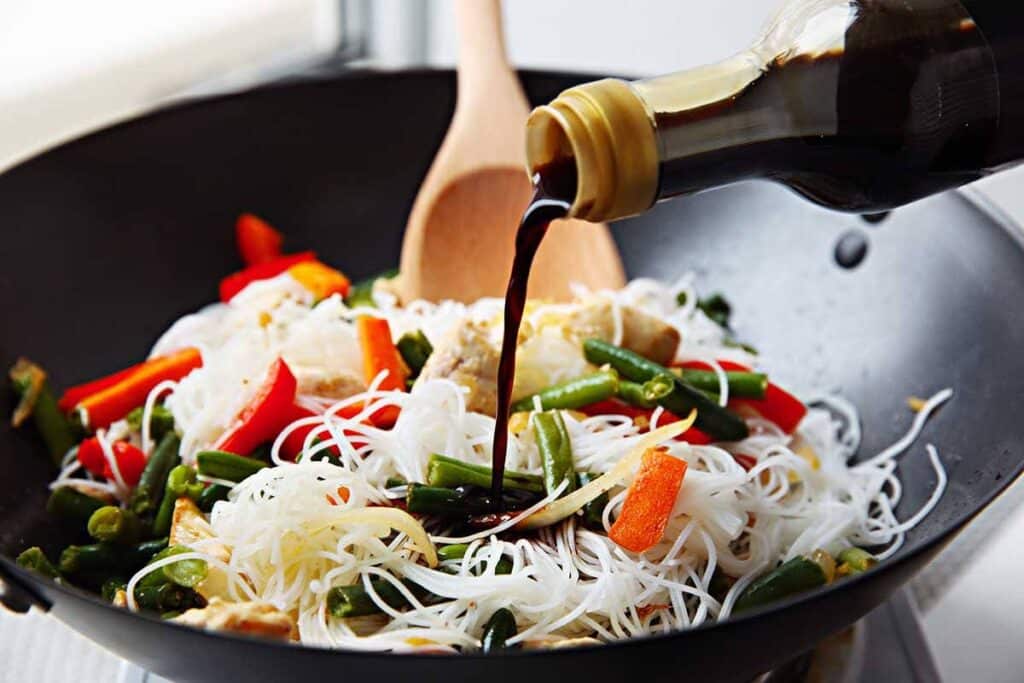
Fish sauce is another fantastic hoisin sauce substitute that you can use. This option provides the salty umami flavor that hoisin typically offers.
It is made from fermented fish so you can expect a fishy flavor and aroma with this sauce swap.
The consistency of this sauce is much more liquid-like. It’s also best to use this sauce in small doses due to its strong flavor.
Tip:
Start with a few drops of fish sauce and increase as needed. Use this sauce for seafood and vegetable dishes where hoisin sauce is not the main ingredient.
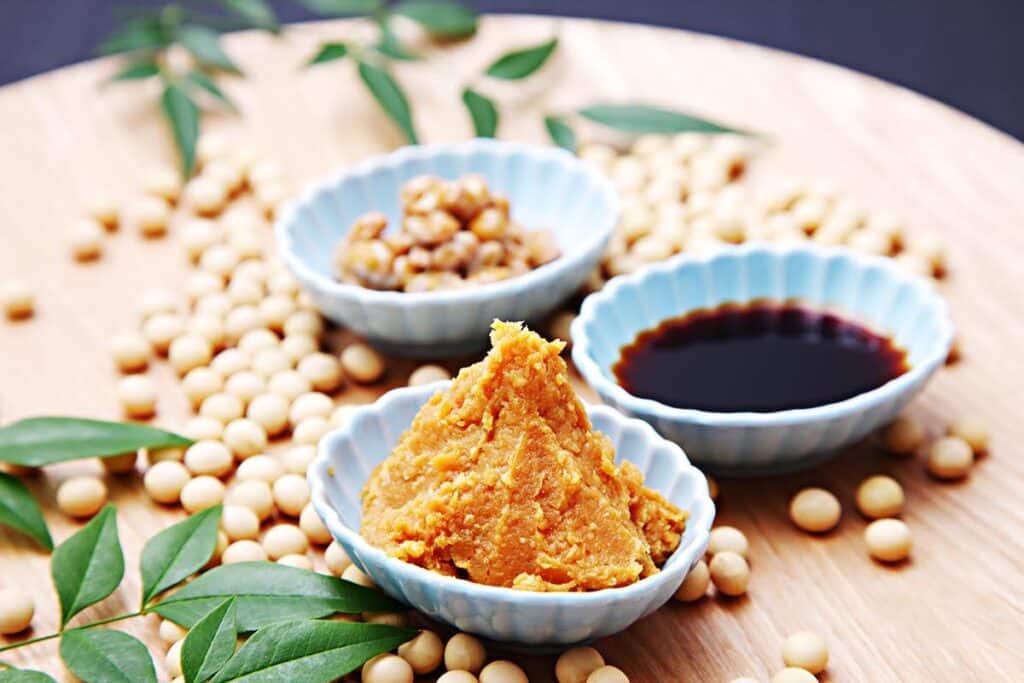
Miso and raisins might seem like an odd combination, but it provides a similar flavor profile to hoisin sauce.
This miso paste provides a meaty umami taste, while raisins bring sweetness to the mixture. This paste also has sesame oil and soybeans, helping this combination better mimic the taste of hoisin.
The consistency of this sauce replacement is much different. It will also require a few hours of prep, during which the raisins will need to be soaked and softened, so it’s not a good last-minute option. Make sure to use a blender or food processor to combine the ingredients before using this mixture.
Tip:
Use a 1:1 ratio when replacing with this miso paste combination. Use this combination for salad dressings, marinades, seasoning rice/noodle dishes, and more. To create a flavor that fits your tastebuds, you can add your favorite seasonings to this combination, like crushed garlic and chili peppers.
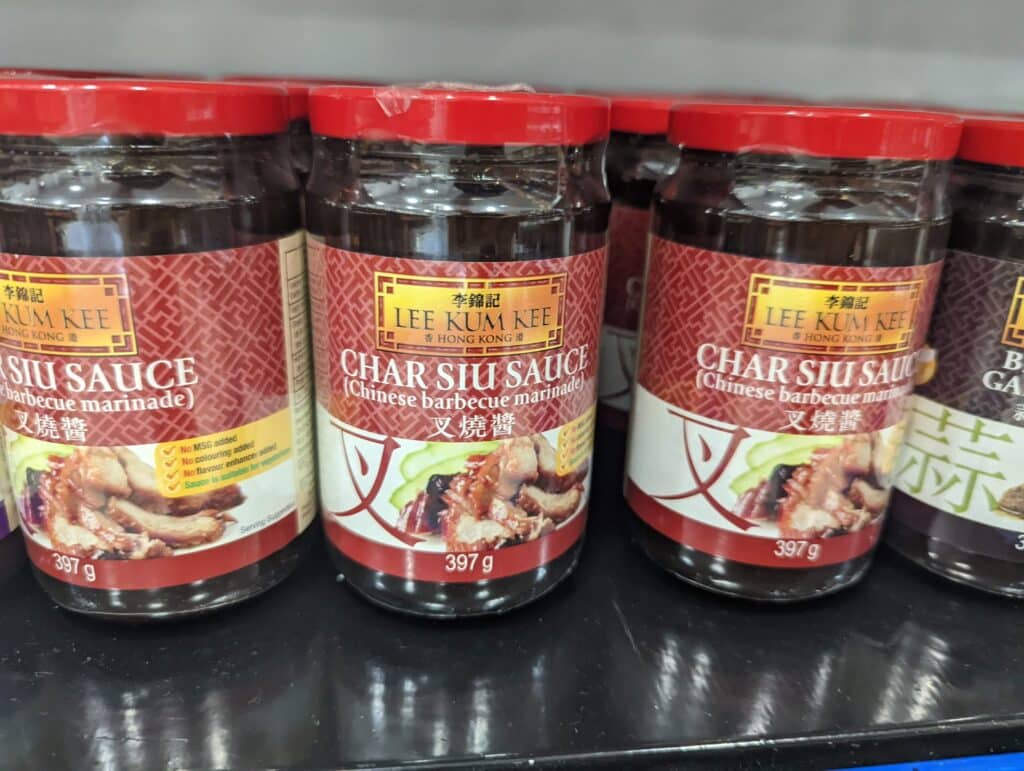
Char siu is another top option to use as an alternative to hoisin sauce in Asian recipes. This sauce provides a sweet, umami taste and has a thicker consistency, similar to hoisin sauce.
This barbecue sauce typically provides a red color, creating a different appearance in dishes when you use this sauce. However, it provides a more similar flavor than American BBQ sauce.
The recipe for this sauce varies a lot depending on which brand is purchased. Some even use hoisin sauce as a base. These variations can create additional flavor notes that may not bode well with the intended recipes.
This sauce may be challenging to find in grocery stores, so you might need to order it online.
Tip:
Use char siu for meat marinades, rice and noodle dishes, and even a dipping sauce. Use a 1:1 ratio to replace with char siu.
If you can’t find a traditional hoisin sauce at the grocery store, you may be able to luck out and find plum hoisin sauce. This variety is much sweeter, and it offers a fruity taste not typically found in hoisin.
While there are flavor differences, it does present a similar garlicky and acid flavor.
This type of sauce can be challenging to find in grocery stores. You will likely need to order it online, so it’s not a good last-minute swap.
Cooking Tip:
Use this sauce for seasoning vegetables and poultry dishes. Start with ½ the required amount and adjust as needed.
As black bean paste is one of the main ingredients in hoisin sauce, it’s a great option for a similar flavor. Like black bean sauce, you’ll find that this paste provides a yummy umami flavor in recipes.
This paste is also salty and earthy. When you add brown sugar to this paste it helps mimic the same taste with sweet flavor.
You’ll also need to add other flavorings like garlic, prunes, five-spice powder, rice vinegar, and sesame oil to create a more hoisin-like sauce.
This swap will add steps to your recipe, so make this option if you have time and the ingredients.
Black bean paste can be challenging to find at the grocery store unless you live near a large Asian market.
Cooking Tip:
You can use this replacement in most recipes, including dipping sauces, marinades, and more. Use a 1:1 ratio to replace with this combination.
Using peanut butter and honey will provide a similar consistency, plus these ingredients are easily accessible and likely already in the pantry. The peanut butter and honey mimic the sweetness.
Add some soy sauce to produce the umami flavor, then mix for a yummy hoisin sauce alternative.
Avoid this replacement if you have nut allergies.
Cooking Tip:
You can use this combination for marinades, salad dressings, and even flavor noodles. Use a 1:1 ratio.
There are multiple options you can use. The homemade version is the top option, as it will provide the most similar flavor and consistency. Otherwise, soy sauce is a great alternative that’s easy to find in stores and provides the desired umami flavor.
Yes, you can use oyster sauce as a substitute. You can expect a seafood flavor when using this sauce. However, it offers a thick texture like hoisin, making it an excellent replacement for marinades and noodle dishes.
Yes, you can use teriyaki sauce as a substitute. This option provides a sweeter taste, with an umami flavor and a saltiness that mimics hoisin sauce. You can use this replacement in most recipes.
There are a few differences, the main are starting with the ingredients. Hoisin includes soybeans and garlic as the main ingredients, while oyster sauce uses oysters, salt, and soy sauce. Hoisin is much sweeter and less salty.
Instead of stressing next time you run out of hoisin sauce or can’t find it at the grocery store, use one of the above options! If possible, opt for creating your own sauce, as this will provide the most similar flavor and consistency.
Otherwise, teriyaki sauce and oyster sauce are the next best options. Regardless of the sauce or mixture you use to replace hoisin; you’ll be left with a tasty Asian-inspired recipe.





